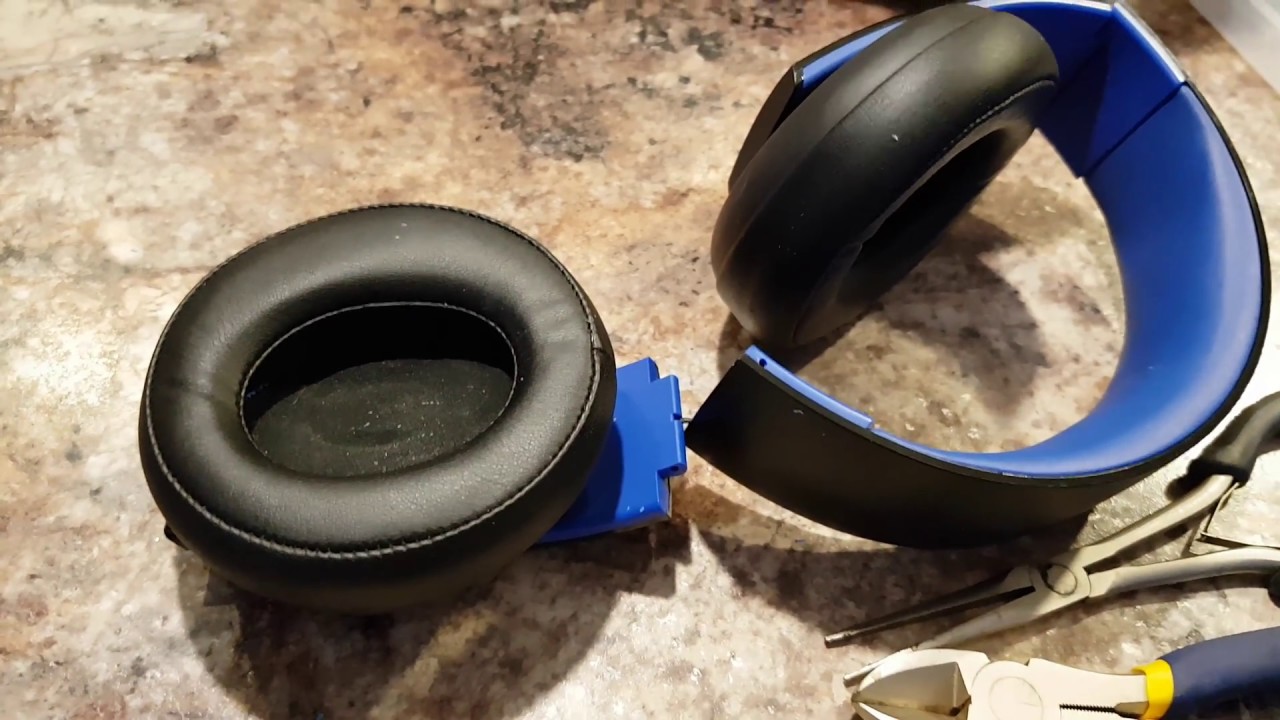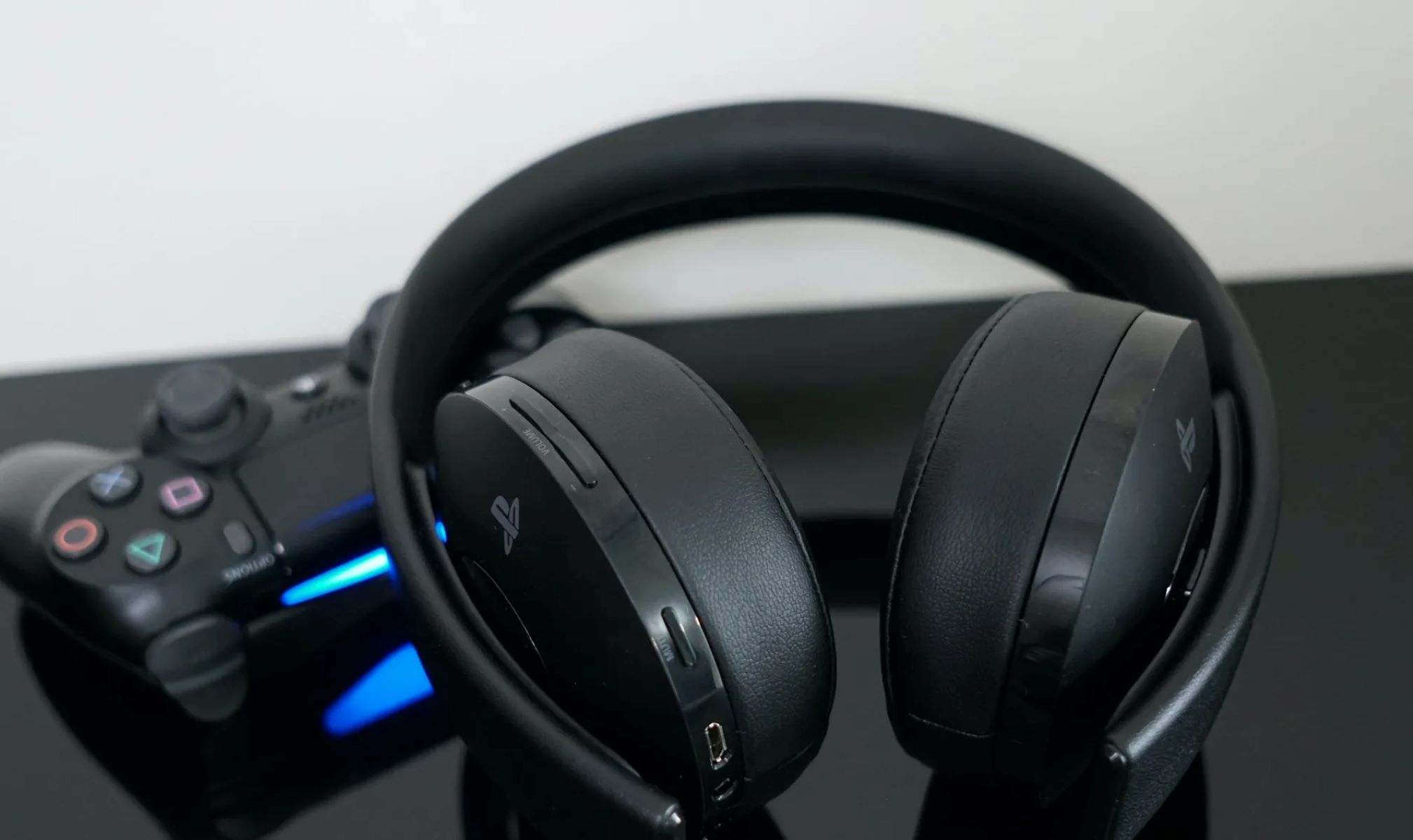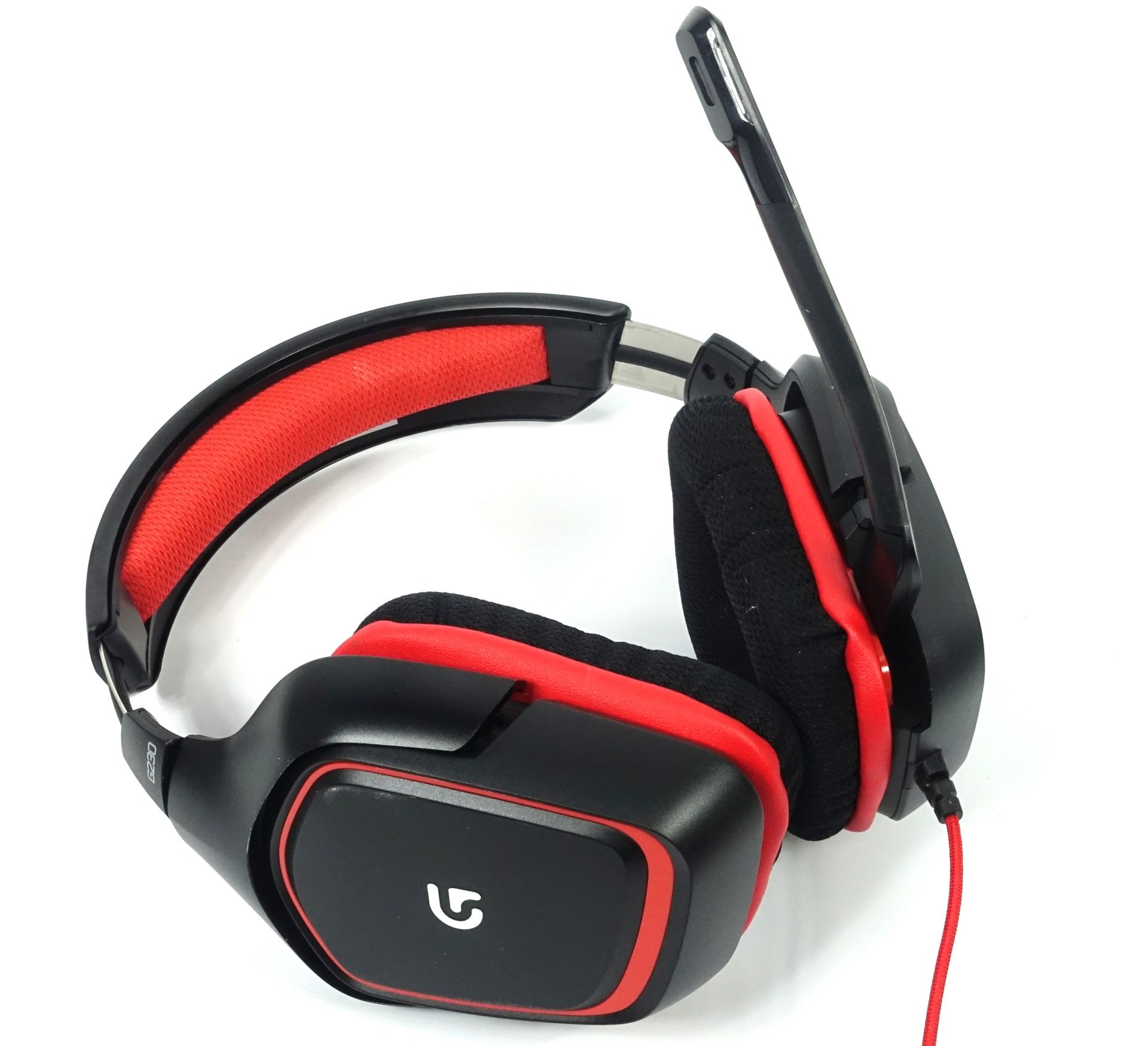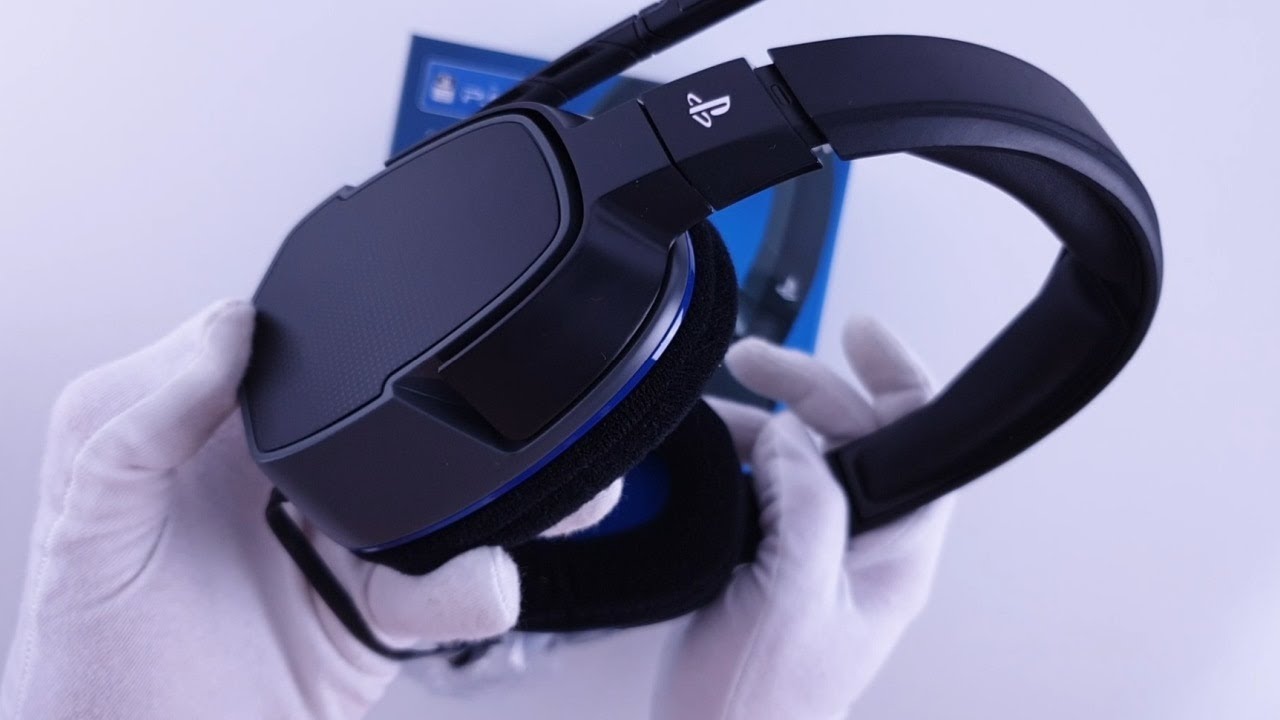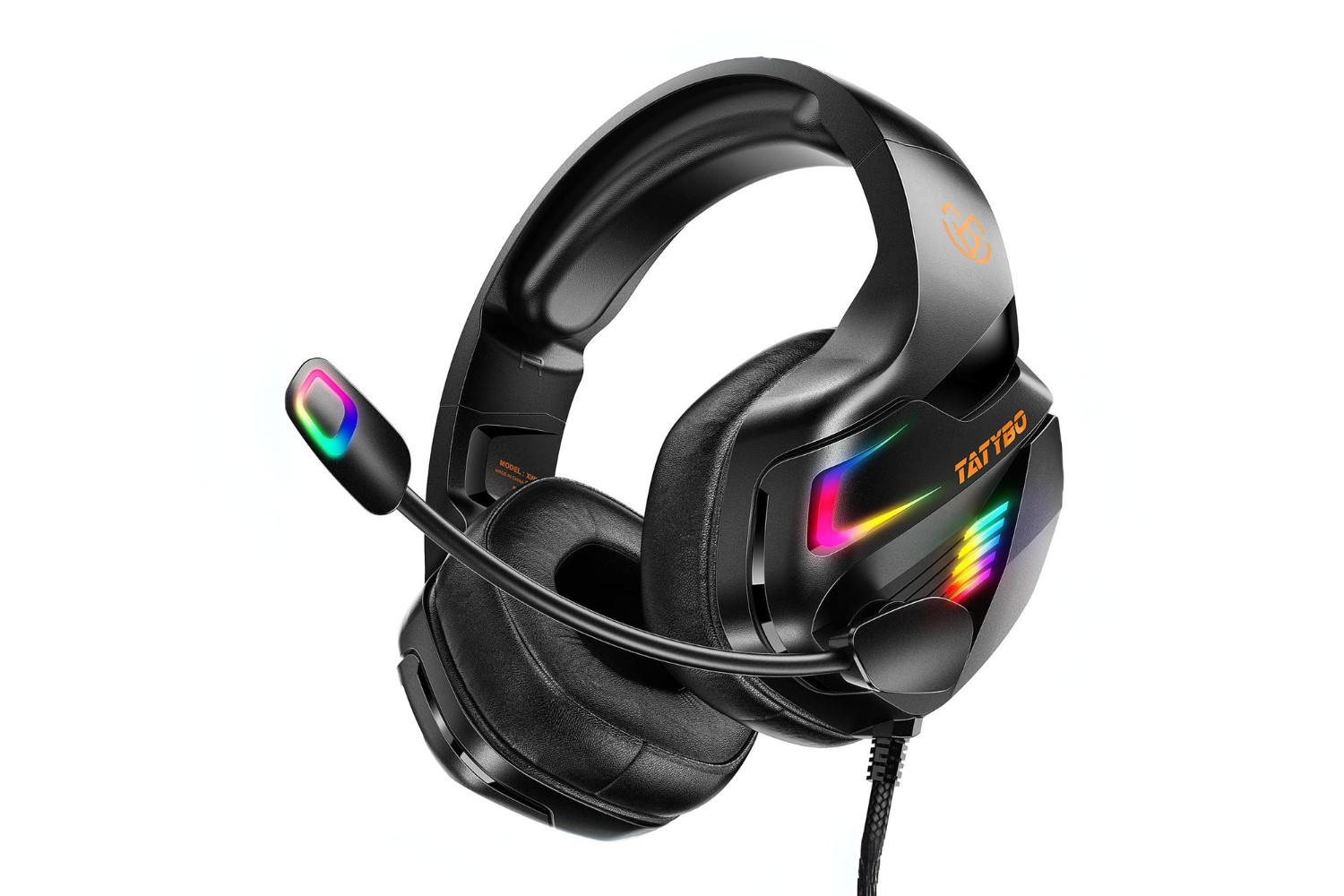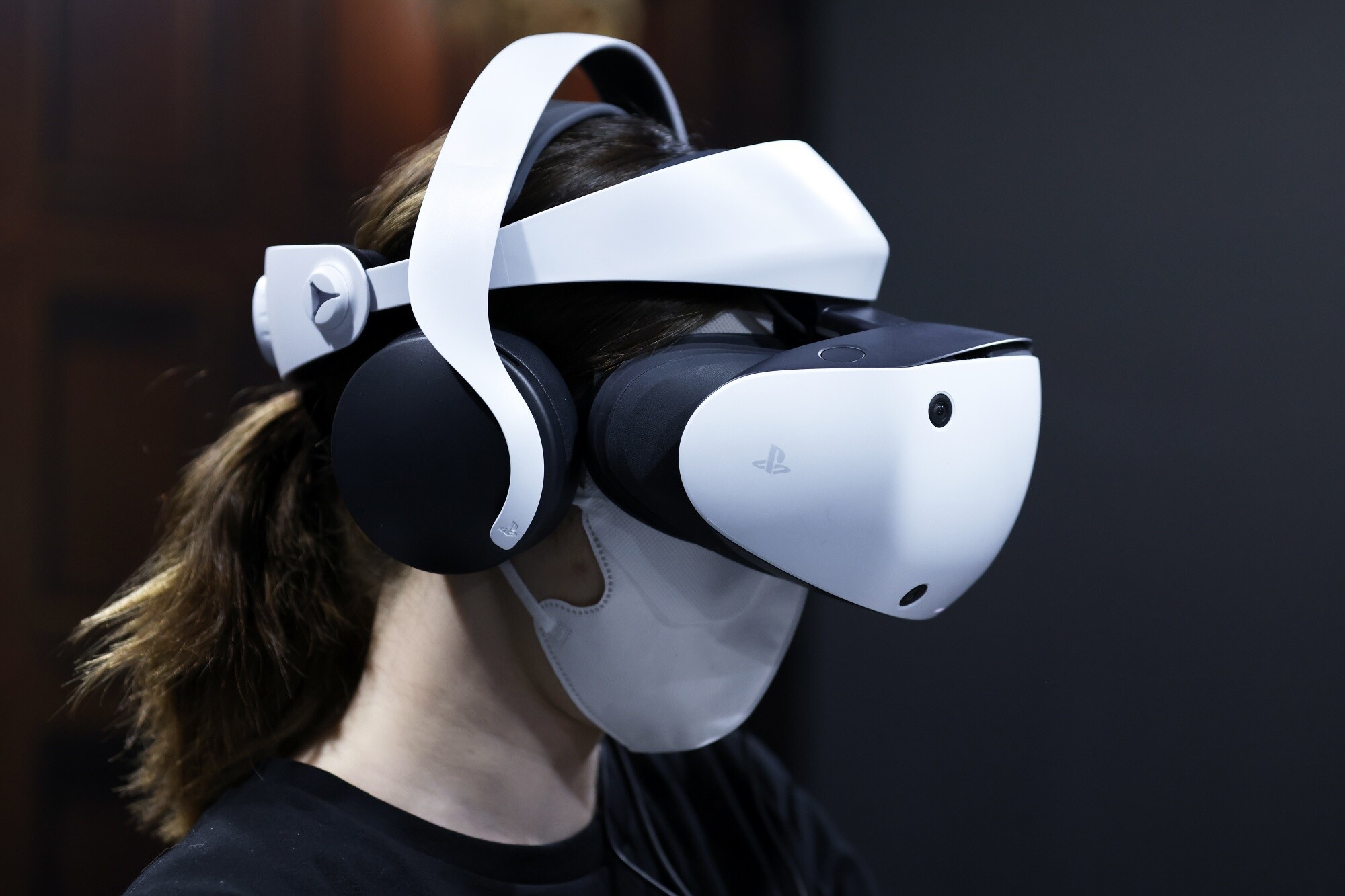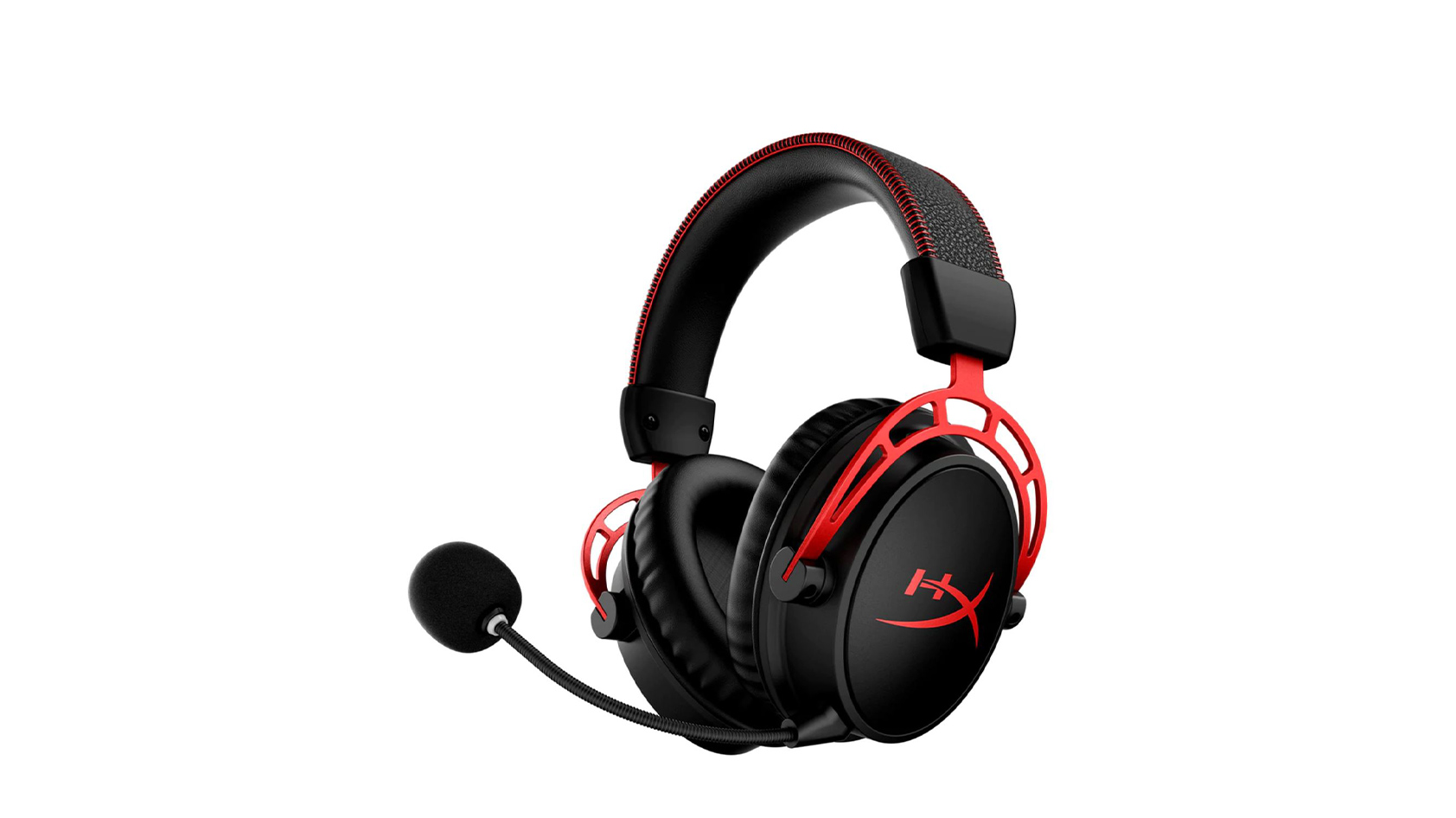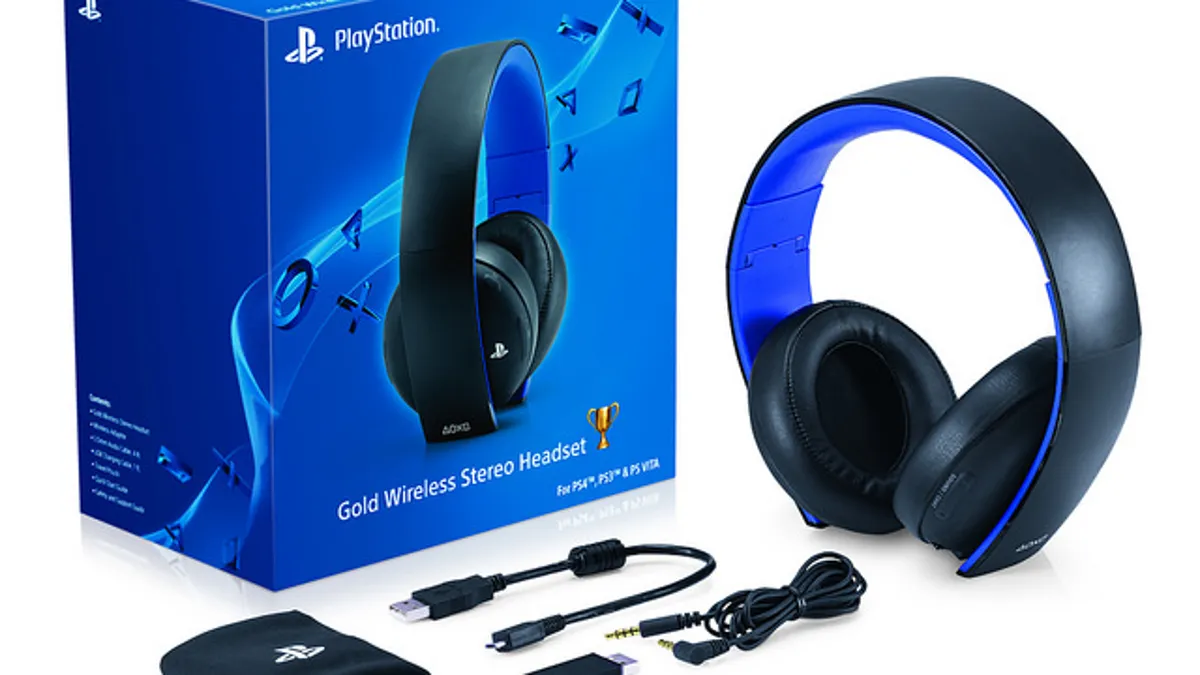Introduction
When it comes to immersing oneself in the captivating world of gaming, a high-quality PS4 headset is an indispensable accessory. Whether you're communicating with teammates in a multiplayer battle or getting lost in the breathtaking soundscapes of a single-player adventure, a reliable headset can make all the difference. However, like any electronic device, PS4 headsets are not immune to technical glitches and operational hiccups. From audio malfunctions to connectivity issues, encountering problems with your headset can quickly put a damper on your gaming experience.
In this comprehensive guide, we will delve into the most common issues that PS4 headset users encounter and provide troubleshooting tips to address these challenges effectively. By the end of this article, you will be equipped with the knowledge and strategies to tackle various headset woes, ensuring that you can fully enjoy your gaming sessions without any hindrances.
So, whether you're a seasoned gamer or a newcomer to the world of PlayStation, join us as we explore the troubleshooting techniques for prevalent PS4 headset issues. Let's dive into the world of gaming audio and unravel the mysteries behind resolving headset-related dilemmas.
No Audio or Sound
Experiencing a sudden loss of audio or sound through your PS4 headset can be a frustrating setback, disrupting your gaming immersion and communication with fellow players. When faced with this issue, it's essential to methodically troubleshoot potential causes to identify and resolve the underlying problem.
Troubleshooting Steps:
-
Check Audio Settings: Begin by verifying the audio settings on your PS4 console. Navigate to the "Settings" menu, select "Devices," and then choose "Audio Devices." Ensure that the input and output devices are correctly configured for your headset. Additionally, confirm that the volume levels are adjusted appropriately.
-
Physical Connection: Inspect the physical connection between the headset and the PS4 controller. Ensure that the headset's audio cable is securely plugged into the controller's audio jack. If using a wireless headset, verify that the wireless receiver is properly connected to the console.
-
Headset Power: If you're using a wireless headset, check the battery level. Low battery power can lead to audio disruptions. Charge the headset if necessary, and ensure that it is powered on.
-
Audio Cable Integrity: For wired headsets, examine the audio cable for any signs of damage or wear. A frayed or damaged cable can result in audio issues. If detected, consider replacing the cable with a new one.
-
System Software Update: Ensure that your PS4 system software is up to date. Periodic updates can include fixes for audio-related bugs and compatibility issues.
-
Alternate Headphone Testing: Test a different pair of headphones or earbuds with the PS4 controller to determine if the issue lies with the headset itself or the console's audio output.
-
Headset Compatibility: Verify that your headset is compatible with the PS4. Some third-party or older headset models may encounter compatibility issues, leading to audio disruptions.
By systematically addressing these potential causes, you can effectively troubleshoot the absence of audio or sound from your PS4 headset. In the event that the issue persists despite these efforts, consider reaching out to the headset manufacturer's support for further assistance.
Remember, a seamless audio experience is essential for fully immersing yourself in the captivating world of gaming, and with the right troubleshooting approach, you can swiftly overcome the challenge of no audio or sound from your PS4 headset.
Microphone Not Working
In the realm of online gaming, effective communication is paramount, and a malfunctioning microphone can significantly hinder your ability to strategize with teammates and engage in multiplayer interactions. When faced with the frustration of a non-functional microphone on your PS4 headset, it's crucial to embark on a systematic troubleshooting journey to pinpoint and resolve the underlying issue.
Troubleshooting Steps:
-
Microphone Mute Switch: Begin by checking the mute switch or button on your headset. It's not uncommon for accidental activation of the mute feature to render the microphone non-operational. Ensure that the mute function is disabled, allowing your voice to be transmitted effectively.
-
Physical Inspection: Examine the physical condition of the microphone boom and its connection to the headset. Look for any signs of damage, such as a bent or broken microphone arm. Additionally, ensure that the microphone is securely attached to the headset and that the connection points are free from debris or obstruction.
-
Microphone Volume Settings: Access the audio settings on your PS4 console and navigate to the "Devices" menu. Select "Audio Devices" and verify that the microphone volume levels are appropriately configured. Adjust the microphone sensitivity to ensure optimal performance during voice transmission.
-
System Software Update: Check for system software updates for your PS4 console. Periodic updates can include enhancements and fixes for microphone-related issues, ensuring compatibility and functionality with a wide range of headsets.
-
Microphone Compatibility: Confirm that your headset's microphone is compatible with the PS4. Some third-party or older headset models may encounter compatibility issues, leading to microphone malfunctions. Refer to the headset's documentation or the manufacturer's website for compatibility information.
-
Microphone Testing: Utilize the PS4's built-in microphone testing feature to assess the functionality of the headset's microphone. Navigate to the "Settings" menu, select "Devices," and choose "Audio Devices." Select "Adjust Microphone Level" to perform a real-time microphone test and ensure that the input levels are registering accurately.
-
Alternate Microphone Testing: If possible, test an alternate microphone with your PS4 controller to determine if the issue lies with the headset's microphone or the console's input port. This can help isolate the source of the problem and guide your troubleshooting efforts effectively.
By diligently addressing these potential causes and following the troubleshooting steps outlined above, you can navigate the challenge of a non-functional microphone on your PS4 headset with confidence and precision. Effective communication is the cornerstone of successful gaming endeavors, and with a proactive approach to resolving microphone issues, you can seamlessly resume engaging with your fellow gamers and relish the collaborative experiences that the gaming world has to offer.
Connectivity Issues
Encountering connectivity issues with your PS4 headset can disrupt the seamless flow of your gaming experience, impeding your ability to engage in multiplayer interactions and savor the immersive audio landscapes that modern games offer. Whether you're grappling with intermittent disconnections or struggling to establish a stable connection between your headset and the PS4 console, addressing connectivity challenges is pivotal in restoring uninterrupted gaming sessions.
Troubleshooting Steps:
-
Wireless Interference: Assess the environment where you typically use your PS4 headset. Wireless interference from other electronic devices, such as routers, cordless phones, or Bluetooth peripherals, can disrupt the headset's connection. Relocate the console or minimize the proximity of potential interference sources to mitigate connectivity disruptions.
-
Bluetooth Pairing: If you're using a wireless Bluetooth headset, ensure that the pairing process between the headset and the PS4 console has been executed correctly. Access the PS4's Bluetooth settings and verify that the headset is paired and recognized by the console. Re-pair the devices if necessary to establish a stable connection.
-
Firmware Updates: Check for firmware updates for your wireless headset. Manufacturers often release firmware updates to enhance connectivity stability and address compatibility issues. Visit the official website of the headset manufacturer to download and install the latest firmware, ensuring optimal performance and seamless connectivity.
-
Signal Interference: If using a wireless USB adapter for your headset, ensure that it is inserted into a USB port on the PS4 console without obstructions. Physical barriers and metallic objects near the USB adapter can interfere with the signal transmission, leading to connectivity issues. Position the console and the wireless adapter in an unobstructed location for improved signal reception.
-
Wired Connection Verification: For wired headsets, inspect the integrity of the audio cable and the connection ports. A loose or damaged cable can result in intermittent connectivity problems. Additionally, ensure that the headset's audio jack is securely plugged into the PS4 controller or console, establishing a reliable wired connection.
-
Router Configuration: If you're experiencing persistent connectivity issues with a wireless headset, consider adjusting the configuration of your router. Switching to a less congested Wi-Fi channel or enabling Quality of Service (QoS) settings can prioritize network traffic, potentially alleviating interference and enhancing the headset's connectivity stability.
By methodically addressing these potential causes and implementing the corresponding troubleshooting steps, you can navigate the realm of connectivity issues with your PS4 headset with precision and expertise. Embracing a proactive approach to resolving connectivity challenges empowers you to reclaim uninterrupted gaming sessions and revel in the captivating audio experiences that define modern gaming adventures.
Poor Sound Quality
Encountering poor sound quality through your PS4 headset can significantly detract from the immersive and captivating audio experiences that modern games offer. From distorted audio output to muffled sound reproduction, addressing issues related to sound quality is pivotal in restoring the full spectrum of audio fidelity and ensuring an enriching gaming experience.
Troubleshooting Steps:
-
Audio Equalization: Access the audio settings on your PS4 console and navigate to the equalizer or sound settings. Adjust the equalizer presets or customize the sound profile to optimize the audio output according to your preferences. Fine-tuning the bass, treble, and mid-range frequencies can enhance the overall sound quality, delivering a more balanced and immersive auditory experience.
-
Headset Positioning: Pay attention to the positioning of your headset and the distance from your ears. Ensure that the ear cups are correctly aligned with your ears, forming a snug and sealed fit. Proper positioning can optimize sound isolation and acoustic performance, reducing external interference and enhancing the clarity of audio reproduction.
-
Driver and Software Updates: Check for driver updates or dedicated software for your specific headset model. Manufacturers often release updates to improve audio performance, address sound quality issues, and introduce new features. Visit the official website of the headset manufacturer to download and install the latest drivers or software updates, ensuring optimal sound reproduction.
-
Audio Source Quality: Assess the quality of the audio source, such as game soundtracks, in-game audio, or streaming content. Low-quality audio files or streaming sources can impact the overall sound quality, leading to diminished audio fidelity. Opt for high-quality audio sources and game settings to maximize the potential of your headset's audio capabilities.
-
Environmental Considerations: Evaluate the ambient environment where you typically use your PS4 headset. Minimize background noise and distractions that can impede the clarity of audio reproduction. Creating a conducive and quiet gaming environment can elevate the perceived sound quality, allowing you to fully appreciate the intricacies of game audio and immersive soundscapes.
By diligently addressing these potential causes and implementing the corresponding troubleshooting steps, you can navigate the challenge of poor sound quality with precision and expertise. Embracing a proactive approach to optimizing sound reproduction empowers you to unlock the full potential of your PS4 headset, immersing yourself in the captivating audio realms that define modern gaming adventures.
Comfort and Fit Problems
Ensuring comfort and a secure fit is essential for an enjoyable and immersive gaming experience. When faced with discomfort or fit-related issues with your PS4 headset, addressing these concerns is crucial to sustain prolonged gaming sessions without physical strain or distraction. Whether you're experiencing discomfort from prolonged use or struggling with an ill-fitting headset, troubleshooting these challenges can significantly enhance your overall gaming comfort.
Troubleshooting Steps:
-
Adjust Headband and Ear Cups: Begin by adjusting the headband and ear cups of your headset to achieve a comfortable and secure fit. Ensure that the headband is properly positioned on the crown of your head, distributing the weight of the headset evenly. Additionally, adjust the ear cups to align with your ears, providing a snug and ergonomic fit for extended wear.
-
Ear Cushion Inspection: Examine the condition of the ear cushions on your headset. Over time, ear cushions can degrade or lose their shape, leading to discomfort during prolonged use. If the cushions appear worn or flattened, consider replacing them with compatible replacements to restore comfort and optimize the fit.
-
Headset Weight Distribution: Evaluate the weight distribution of your headset. Heavier headsets can exert pressure on the head and ears, leading to discomfort during extended gaming sessions. If your headset feels excessively heavy, consider exploring lighter headset models that prioritize comfort without compromising audio quality.
-
Breathable Materials and Padding: Opt for headsets with breathable materials and ample padding to enhance comfort during extended use. Breathable ear cushion materials and generous padding on the headband can minimize heat buildup and pressure points, contributing to a more comfortable gaming experience.
-
Customizable Fit Options: Explore headsets with customizable fit options, such as adjustable headbands and swivel ear cups. These features allow you to tailor the fit of the headset to your specific preferences, accommodating varying head sizes and shapes for a personalized and comfortable gaming experience.
-
Ergonomic Considerations: Consider the ergonomic design of the headset, including the distribution of pressure points and the contouring of the headband and ear cups. Ergonomically designed headsets prioritize user comfort, minimizing strain and fatigue during prolonged use.
By meticulously addressing these potential causes and implementing the corresponding troubleshooting steps, you can navigate the realm of comfort and fit-related problems with precision and expertise. Embracing a proactive approach to optimizing comfort and fit empowers you to indulge in uninterrupted gaming sessions, fully immersing yourself in the captivating worlds that gaming has to offer.
Conclusion
In the realm of gaming, the role of a PS4 headset extends far beyond mere audio output and microphone functionality. It serves as a gateway to immersive experiences, enabling seamless communication, captivating soundscapes, and a heightened sense of presence within virtual worlds. Throughout this troubleshooting guide, we have explored the common challenges that PS4 headset users may encounter, offering comprehensive strategies to address these issues effectively.
From the frustration of encountering no audio or sound disruptions to the nuances of microphone malfunctions, connectivity challenges, and sound quality discrepancies, each issue presents a unique obstacle that can impede the gaming experience. By embracing a proactive and methodical approach to troubleshooting, users can navigate these hurdles with confidence, ensuring that their gaming sessions remain uninterrupted and thoroughly enjoyable.
The journey of addressing these challenges encompasses a blend of technical acumen, attention to detail, and a keen understanding of the nuances of audio technology. It involves delving into the settings of the PS4 console, inspecting physical connections, evaluating environmental factors, and exploring the ergonomic facets of headset design. By empowering users with the knowledge and strategies to troubleshoot these issues, this guide aims to foster a gaming environment where audio integrity, communication clarity, and comfort converge harmoniously.
Furthermore, the troubleshooting process serves as a testament to the evolving nature of gaming technology and the pivotal role that headsets play in shaping the overall gaming experience. It underscores the significance of seamless audio immersion, effective communication channels, and ergonomic considerations in maximizing gaming enjoyment.
As we conclude this journey through the intricacies of PS4 headset troubleshooting, it is evident that the pursuit of an optimal gaming experience extends beyond the virtual realms, encompassing the tangible elements of hardware functionality and user comfort. By equipping users with the tools to overcome these challenges, we endeavor to elevate the gaming experience, ensuring that every moment spent in the captivating worlds of PlayStation gaming is characterized by uninterrupted audio immersion, seamless communication, and uncompromised comfort.
In the ever-evolving landscape of gaming, the quest for audio perfection and uninterrupted communication remains a testament to the dedication of gamers worldwide. With the insights and strategies presented in this guide, users are poised to conquer the challenges of PS4 headset woes, embracing a gaming experience that transcends technical barriers and fosters a deep connection with the virtual worlds they inhabit.







